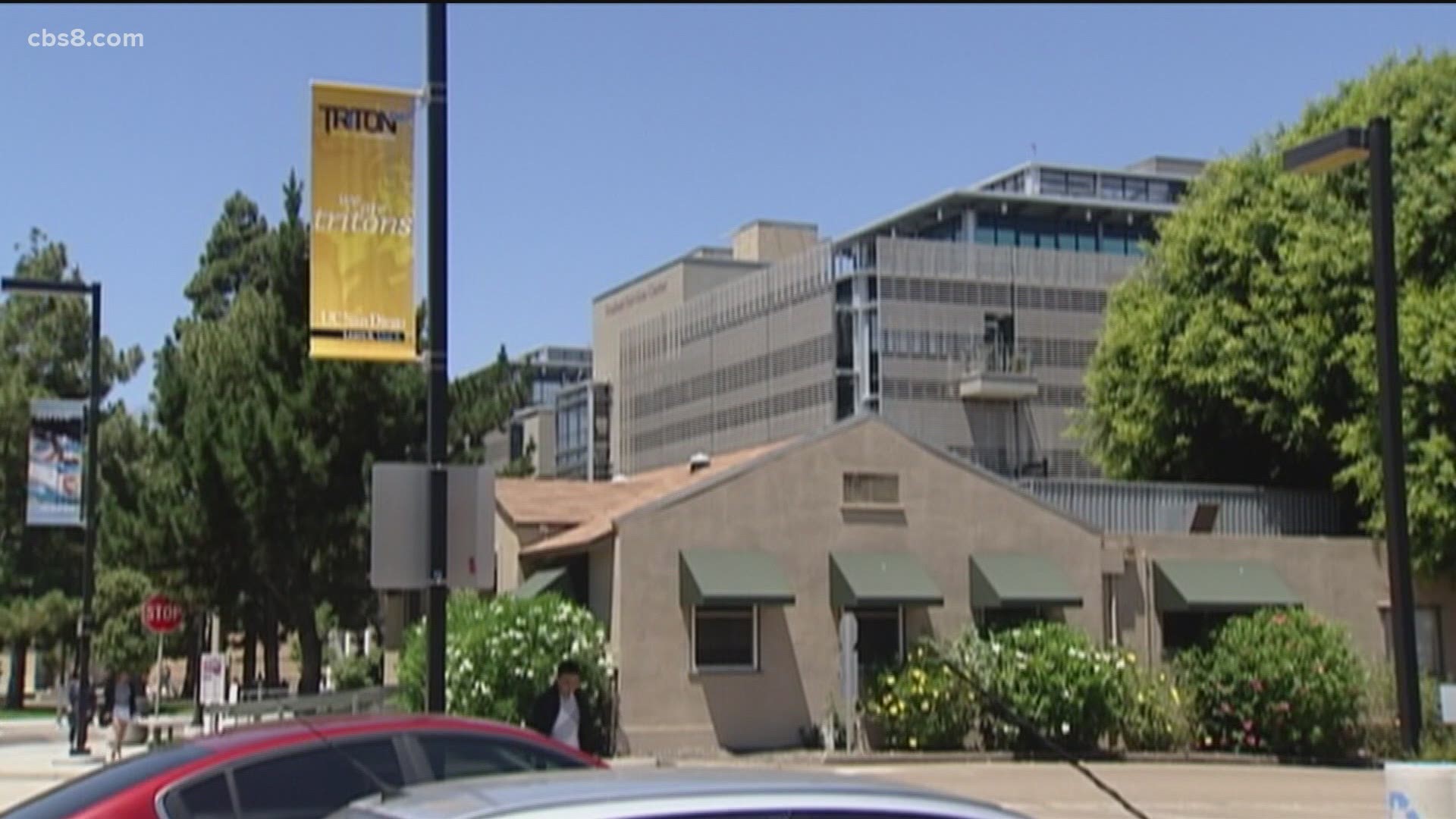SAN DIEGO COUNTY, Calif. — University of California Health announced Monday UC San Diego will be one of two campuses to pilot a smartphone technology that notifies users if they have had a high-risk COVID-19 exposure.
The limited pilot program will roll out incrementally at UCSD later this month. UC San Francisco will start using the technology a few weeks later for students, faculty and staff participating in onsite activities at select locations.
According to the university system, the technology does not collect location data from any device and will never share user identities.
"If the pilot is successful, it will set the foundation for the state to offer voluntary exposure notifications to all Californians using this free smartphone-based technology," said Christopher Longhurst, chief information officer for UC San Diego Health. "The Google/Apple Exposure Notification Express tools offer a high-tech, privacy-preserving solution that automates the work of notification for you -- without sharing who you are or providing unnecessary digital details that could compromise privacy."
The pilot programs will allow those who volunteer to use the technology to receive automatic smartphone notifications of a potential exposure to other enrolled users diagnosed with COVID-19, regardless of whether the users know each other.
"Can I notify people that I don't even know their name and phone number? And this technology will allow me to do that," said Longhurst.
The technology is intended to supplement the work of human contact tracers and help further reduce the spread of SARS-CoV-2, the virus that causes COVID-19. A major goal of the pilot is to determine if using smartphone technology can encourage users to respond to a high-risk exposure more quickly by self-isolating and receiving additional clinical resources.
To protect privacy, users decide whether they want to share a verified positive test result with the app and determine whether they want to share that with other users. State and university epidemiologists will review the results of the pilot to determine how to optimize the smartphone-based technology and whether it should be rolled out more broadly.
"It's likely that we will need multiple approaches to exposure notification in order to meet the preferences and needs of individual Californians," said Dr. Carrie L. Byington, executive vice president of University of California Health and an infectious disease expert. "This is a promising avenue to explore to supplement traditional methods. Fortunately, UC has the capacity to work on multiple fronts in the fight against COVID-19."
The technology uses Bluetooth to communicate with other Bluetooth-enabled devices nearby. When a person opts into using the notification system, the user's phone broadcasts a random identification number to other phones in the area. When phones come within six feet of each another, they log each other's IDs -- without names or locations attached.
If a person is diagnosed with COVID-19, they can voluntarily enter a keycode indicating they received a positive test result. This approach will generate an anonymous alert to other users based on proximity and length of exposure.
Meanwhile, more than 600 students and faculty sent an open letter to UCSD calling to stop the Return to Learn plan for 12% of the school population to return for either in-person or hybrid learning.
"I signed this letter because I'm not comfortable knowingly the percentages of risk that we are putting people's lives in danger," said Andrew Jolivétte, Ph.D, UCSD Ethnic Studies Chair.
Jolivétte also studied public health and epidemiology and he will be teaching remotely. The professor said with outbreaks at college campuses across the U.S. and at San Diego State it is not safe for the 14,000 students to come back to class.
"The campus is taking the precautions in terms of instruction - the concern is what is going to happen outside of instruction when folks go off campus," said Jolivétte.
UCSD sent a statement:
"UC San Diego shared its repopulation plan last week. It is a multi-faceted, proactive strategy to detect SARS CoV-2 (which causes COVID-19) in our campus community so that we can reduce transmission of the virus to the greatest extent possible. This past Friday, a system developed by campus experts enabled us to detect trace amounts of virus in wastewater. This program allows us to detect the virus before symptoms appear. We were able to alert those who may potentially have been affected that they should be tested as soon as possible out of an abundance of caution. Courses will be delivered predominantly online with about 12% offered in person or in a hybrid format. Students have the choice to live on-campus, off-campus or remain at home, as well as enroll in all remote, hybrid or in-person courses. Instructors of record and TAs have the choice to teach remotely during the fall if they prefer to do so."
UCSD move in day will be staggered over ten days from September 19 to September 28.

